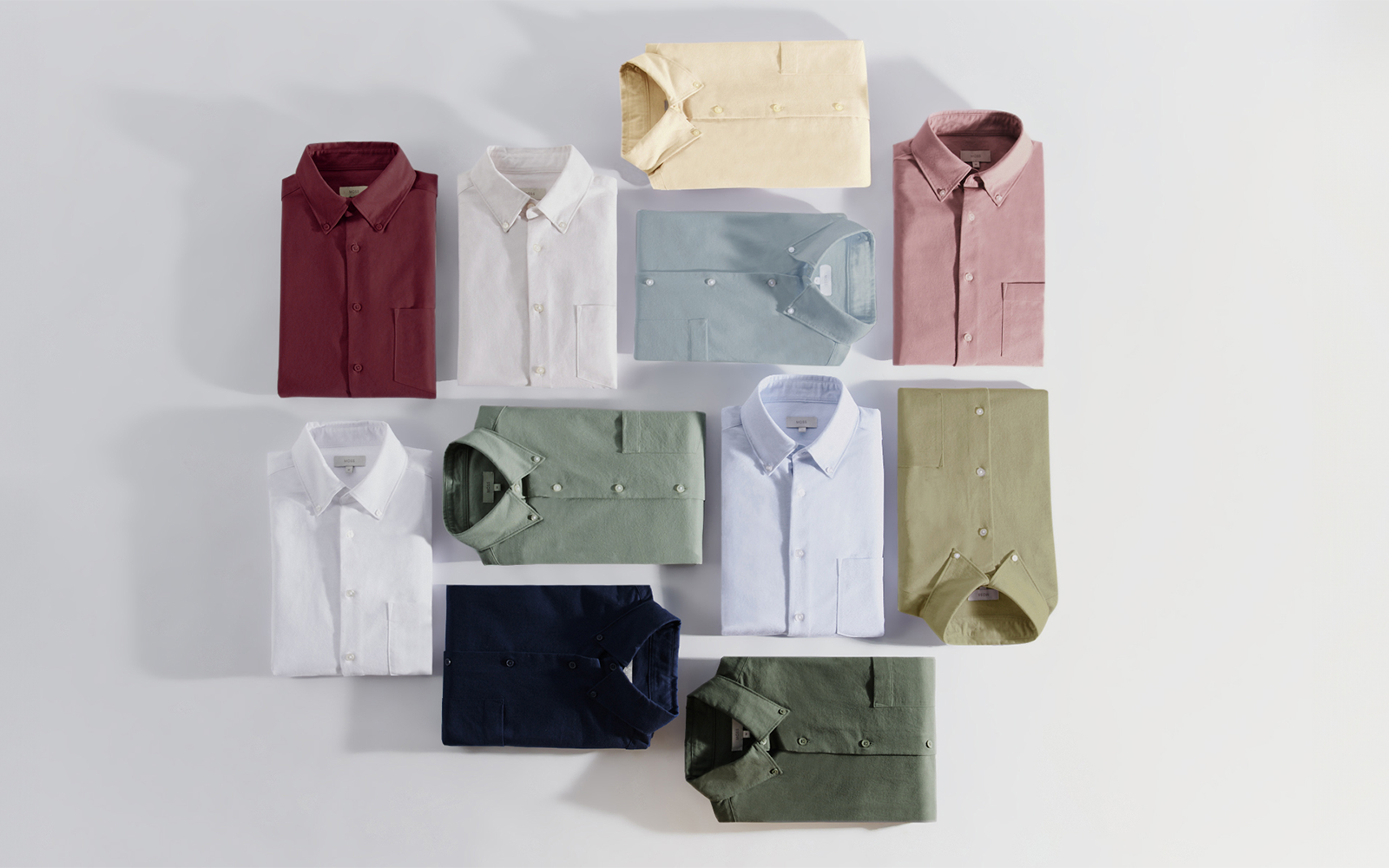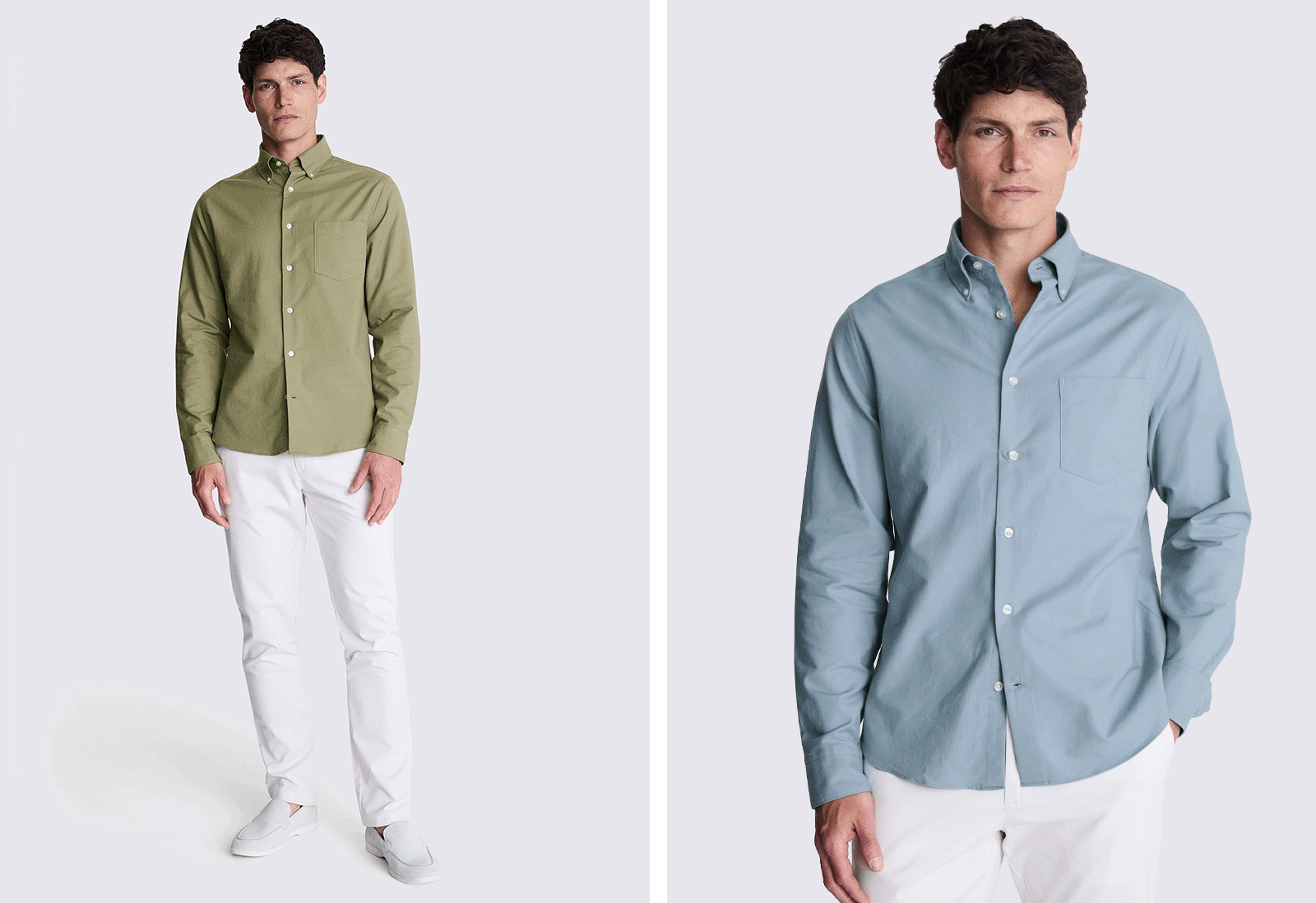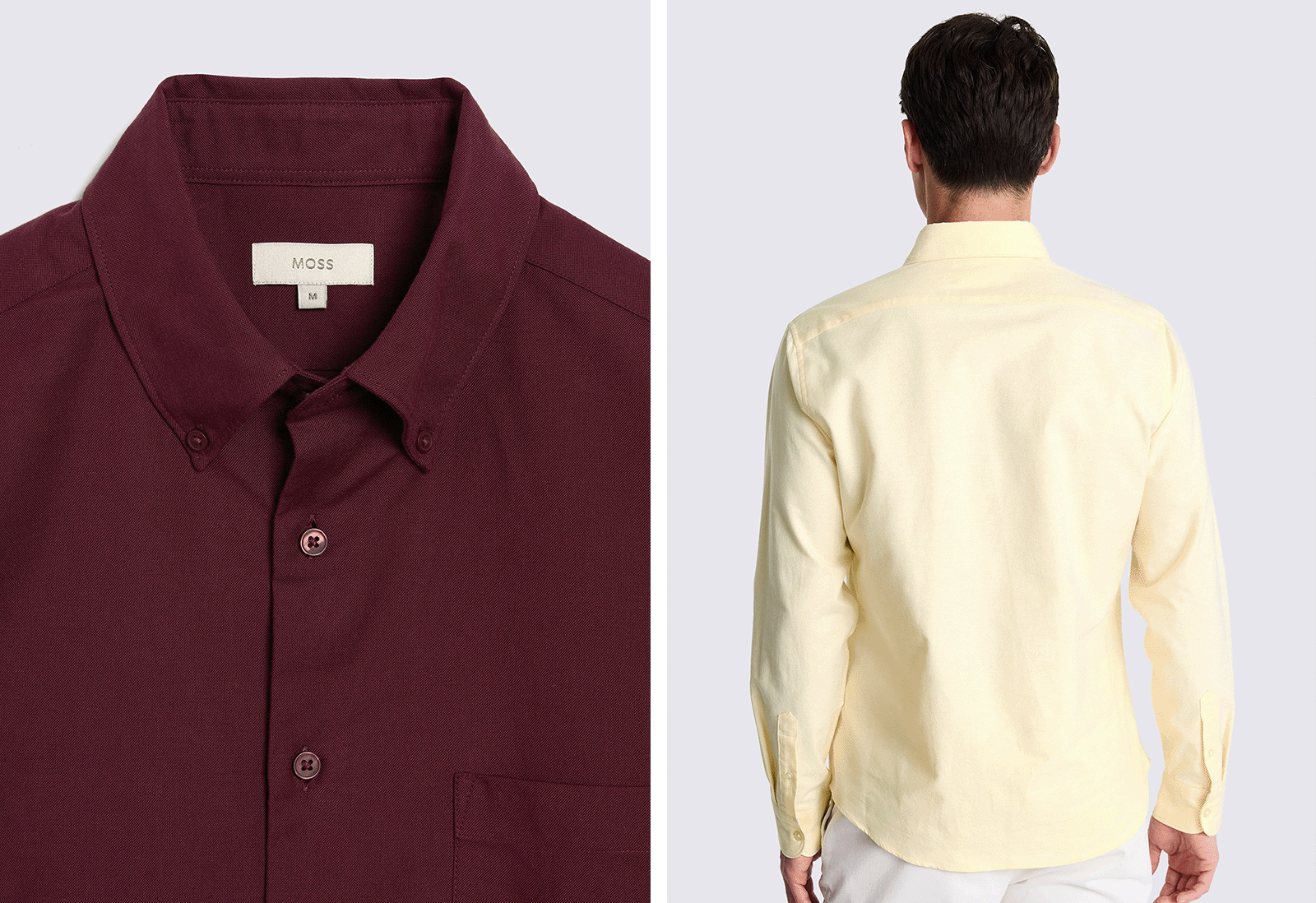Get up to speed on this crisp but comfortable style.

THE SHIRT THAT NEVER GOES OUT OF STYLE
Ever been confused by shirt styles, wondering ‘what is an Oxford shirt?’ Or found yourself unsure about when or where to wear one? Our shirt guide will help you get up to speed on this crisp but comfortable style everyone needs in their wardrobe.
What is an Oxford shirt?
You’ve probably seen or worn an Oxford shirt before, but you might not have realised. The name Oxford refers to a type of cloth originally made in Scotland – it’s heavier and has a rougher weave (also sometimes known as a basket weave) than other types of shirts, which means it’s sometimes more durable. Oxford cloth tends to hold its shape well and is often stiffer than other kinds of fabric, too.
An Oxford shirt can have a two-tone appearance when different colour threads are woven together, but single-colour shirts are just as popular. A white Oxford shirt is a classic look that works for all kinds of events, from laid-back days through to formal affairs. It’s a versatile and timeless look, wherever you’re headed.
SHOP OXFORD SHIRTS

Where to wear an Oxford shirt
Because an Oxford shirt is durable, simple and stylish, it works well for almost anything you’ve got on. Pair it with a smart men’s suit for more formal events like a wedding or Ascot, then scale it back for something more casual. This type of shirt also lends itself well to everyday plans like work, family gatherings, business meetings or drinks.
If you choose this style of shirt for work, be mindful of the dress code in your office. An Oxford shirt is a great option for a more relaxed office environment because it’s easy to style up and down. Wear it with chinos for a more laid-back day, or under a suit jacket for a big meeting.
Because of its heavier weave and weightier fabric, an Oxford shirt is usually a better choice for the cooler months. That’s one of the reasons we love them for winter or outdoor weddings, especially when you can’t rely on British weather. When paired with a jacket, however, a heavier weave Oxford shirt can be a little on the warm side so go for something lighter in the summer.
Getting the right fit
Need some help styling your shirt? Here are our quick tips to get the right fit for your Oxford shirt without having to overthink it.
When it comes to the cut, you’ll usually find slim, tailored and regular are the most common options available. Your shirt shouldn’t feel too tight across your chest, even if you prefer a more fitted style. Ideally the shoulder seams should sit on the spot where your chest and arm meet so it’s not stretching across your front.
Collars are usually button-down, which means the ends of your collar can be fastened to your shirt with discreet buttons to make things neat without being overly stuffy. Ideally you want to be able to fit two fingers between your neck and closed collar so it stays looking neat whether you’re buttoned up or a little bit open.
With a long-sleeved shirt style, you want to make sure the hem of your sleeve ends where your arm and hand join. If you’ve ever worn a shirt with sleeves that are slightly too short, you’ll know exactly where this should be.

How to style your Oxford shirt
How you wear your shirt is up to you, but if you want some help styling your Oxford shirt, we’ve got you. Sometimes it’s still easy to get caught out by the different interpretations of formal and business casual.
Formal and semi formal events
Heading to a formal wedding or event? The dress code will usually be pretty clear. It’s normally a white Oxford shirt and a black suit or a navy blue suit – you can even explore other neutral suit tones if you’d prefer something a little less formal. For other events, including less formal weddings where you’re a guest and not in the wedding party, you can have a bit more fun with your outfit, adding different colours and accessories like a watch or cufflinks.
For events classed as semi-formal, you can usually get rid of the tie and mix up your colour choices more. You can also move away from styling your shirt with a suit and try more casual picks like a less formal blazer or chinos.

Business casual and smart casual
If you’ve ever looked up business casual in a panic, you’ll know there really isn’t one single definition of this style. It’s very much open to interpretation, and we think that’s a good thing. As a general rule, this dress code focuses on more modern styles and casual fits. It’s not about being buttoned up, uncomfortable or overly formal.
Smart casual is less about the workplace and more about sunny days, outdoor weddings and dinner at a nice restaurant. You can tone down the formality by pairing your Oxford shirt with tailored trousers or even wearing it open with a T-shirt underneath. If you really want to move towards the more casual end of the scale, smart shorts can work well, too.
Casual
Oxford shirts are great for layering and will keep you warm in autumn and winter. Layer under a jumper with the collar peeking through and add jeans or chinos for a relaxed feel. Rolled up sleeves, opening up your shirt, or unfastening the top two buttons can also up the casual factor. You can wear your Oxford shirt untucked or half-tucked, too.
Upping the style stakes with an Oxford shirt
When it comes to shirts for men, an Oxford shirt is up there as a versatile wardrobe piece. It’s simple to style, and should fit in with the rest of your wardrobe easily. If this versatile, timeless look is for you, check out our line up of Oxford shirts.
SHOP OXFORD SHIRTS




































